Ever wondered if the ancient art of burning wood could actually seal and protect it? Dive into the intriguing world of wood charring and discover its hidden benefits!
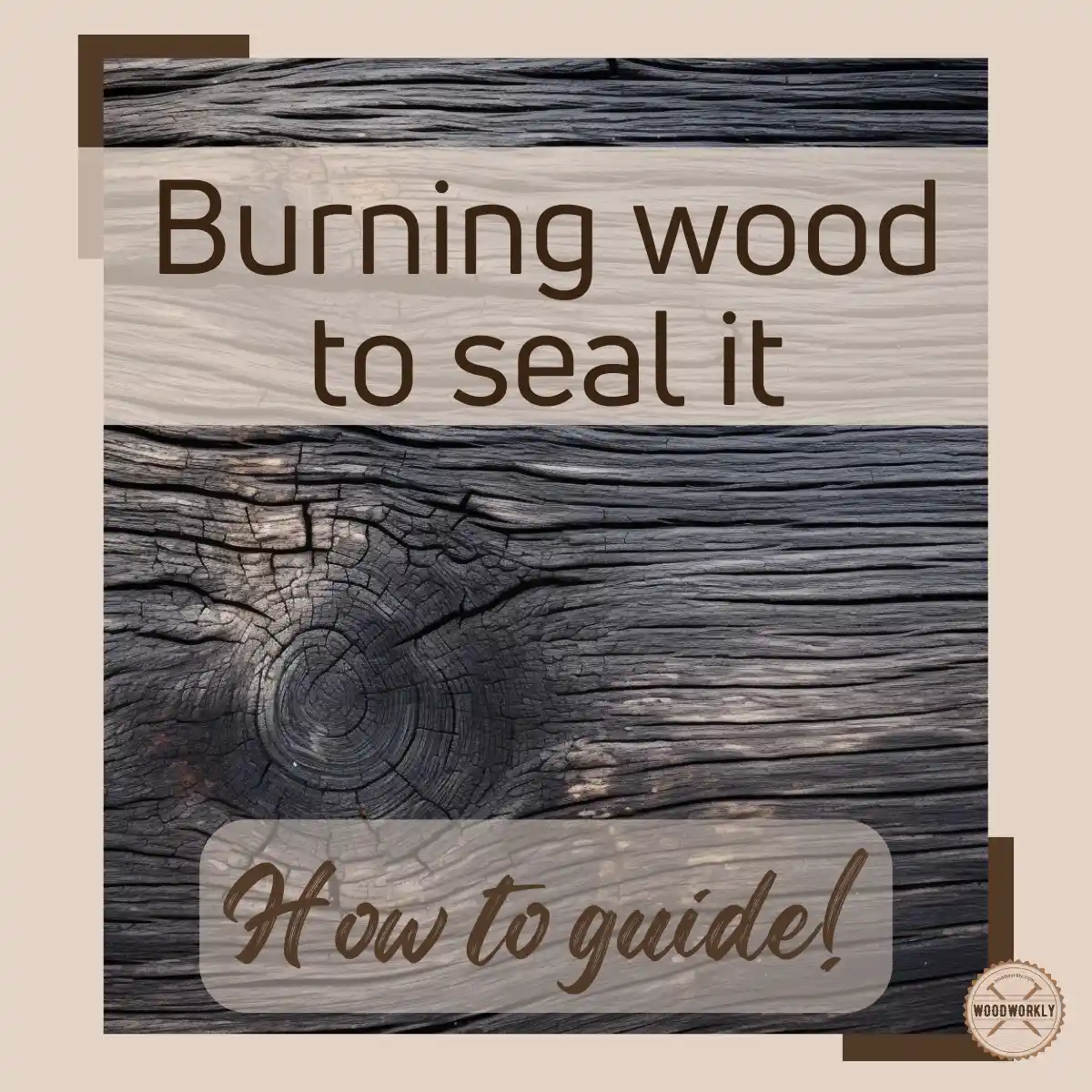
Burning wood is an ancient Japanese technique known as Yakisugi (Shou Sugi Ban), used to protect the wood from insect attacks and weather elements while giving the woodwork a uniquely beautiful appearance.
When I first burned wood, I was curious about whether it sealed the wood like traditional wood sealants and how that could be possible.
So, I conducted some research with the help of experts and was able to learn many new things about the impact of wood burning on the wood surface that I hadn’t known before.
So, let’s discuss, Does burning wood seal it?
Yes, burning wood seals the wooden surface since a layer of char leaves on the surface after burning the wood. The carbon layer prevents water from going inside the wood and protects wood from rotting. Burning provides good water resistance to the wood with enhanced protection from fire, insects, and UV light.
But that’s a quick snapshot!
So, in this article, I’ll explore does wood burning protects the wood, whether it waterproofs the wood, do termites eat burnt wood, and does it prevents the wood from rotting.
Furthermore, I’ll answer some frequently asked questions as well.
Let’s jump in!
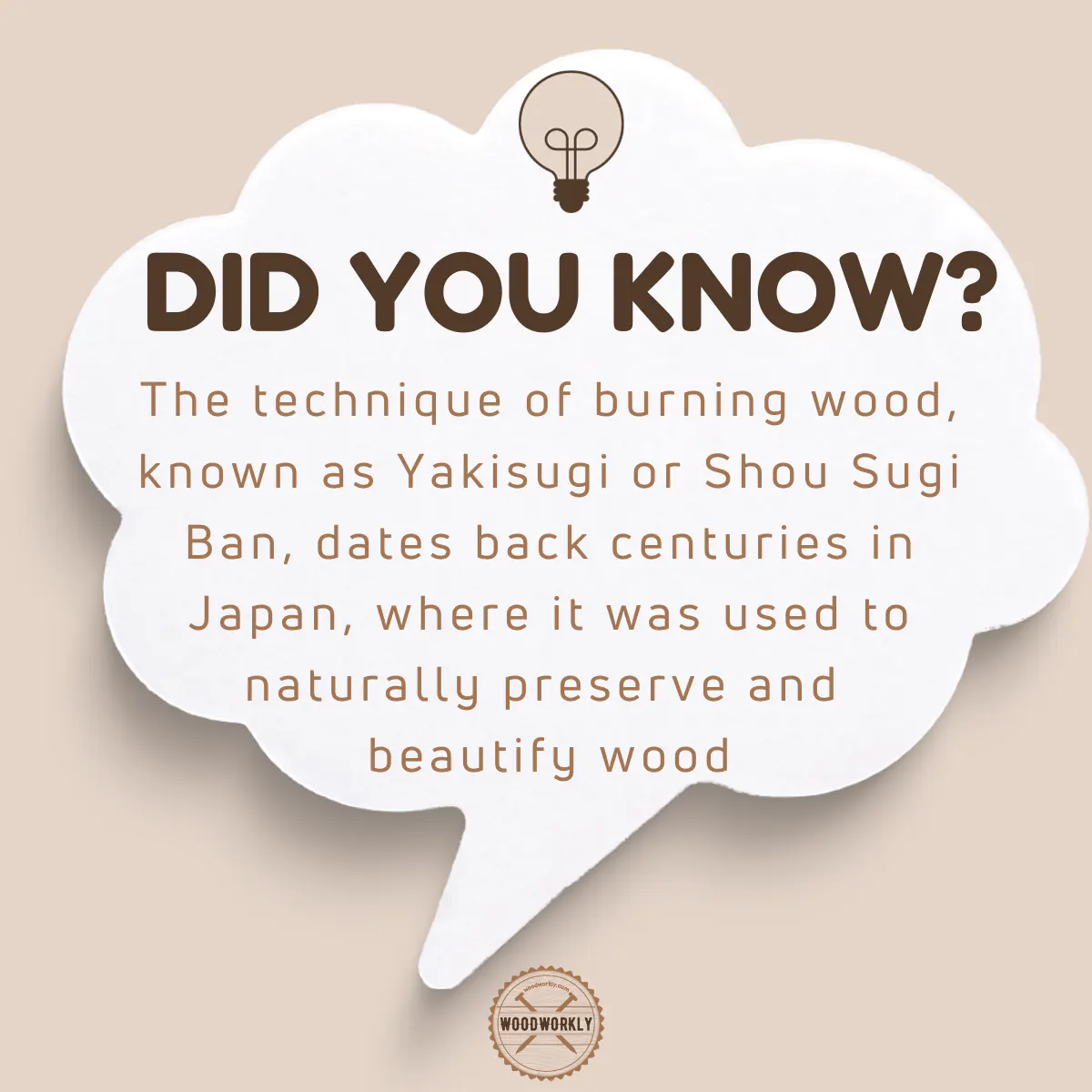
Does Wood Burning Protect Wood?
Yes, wood burning protects wood from fire, termites, insect attacks, pests, water damage, and other environmental elements.
Burning wood is an excellent wood finishing method which is done by subjecting surfaces of furniture and other woodwork to an open fire.
Burning helps to preserve the wood and prevent the wood from decaying.
Because it gives good protection from environmental elements, you can use burnt wood for both indoor and outdoor woodworking projects.
Even though burnt can live well in exterior conditions, I highly advise you to seal burnt wood before keeping it outside since burnt wood cannot tolerate extreme weather conditions well as finished wood with quality sealants.
But overall, wood burning protects wood from so many and helps to keep the wood for so long with less maintenance.
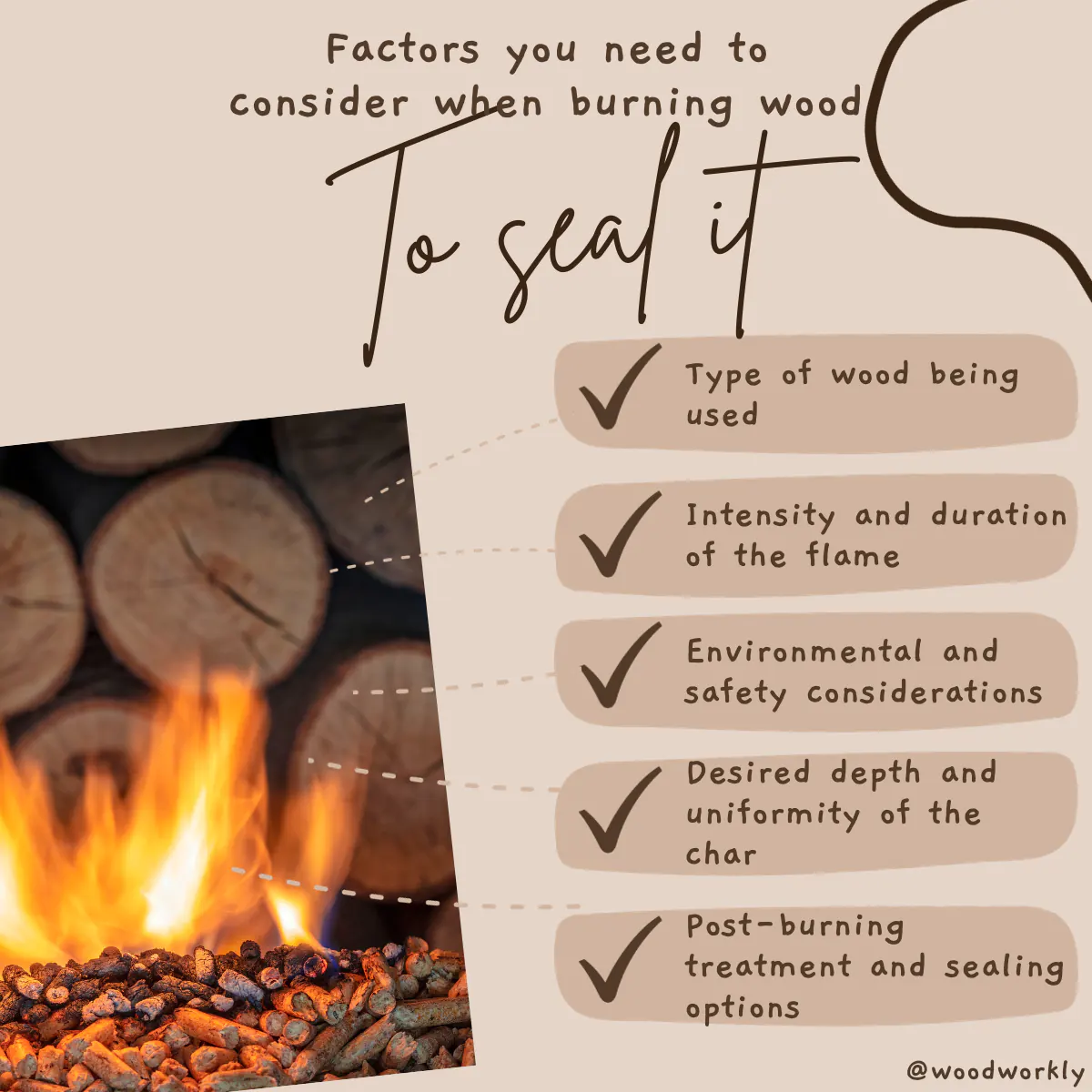
Termites and insects hate carbon-coated layers above the wood surface and they are unable to lay eggs or make habitats. This prevents insect growth on burnt wood surfaces.
Burning wood is considered one of the best methods to protect wood from insects, fungi, pests, and other small bugs.
You don’t need to use any pesticides or harsh chemicals on burnt wood since it already has the protection you ever wanted by burning the wood or you can do the staining over wood burning before sealing the wood.
Usually burnt wood is able used for up to 12 to 15 years with zero maintenance. You don’t need to re-apply sealants on burnt wood annually as regular woods.
Burning wood increases the wood’s durability to keep the wood’s stability the same for many years.
This is why burning wood which is also known as charring wood is popular among woodworkers.
Plus, having a carbon layer is useful to prevent harmful UV rays from hitting the wood underneath.
This keeps the wood from cracking, fading, and peeling due to direct sunlight and makes it ready to tolerate UV light.
Overall, Wood burning seals and protects wood from insects, fungus, fire, rotting, and UV light while giving a unique black or brown-reddish look to your furniture and woodwork.
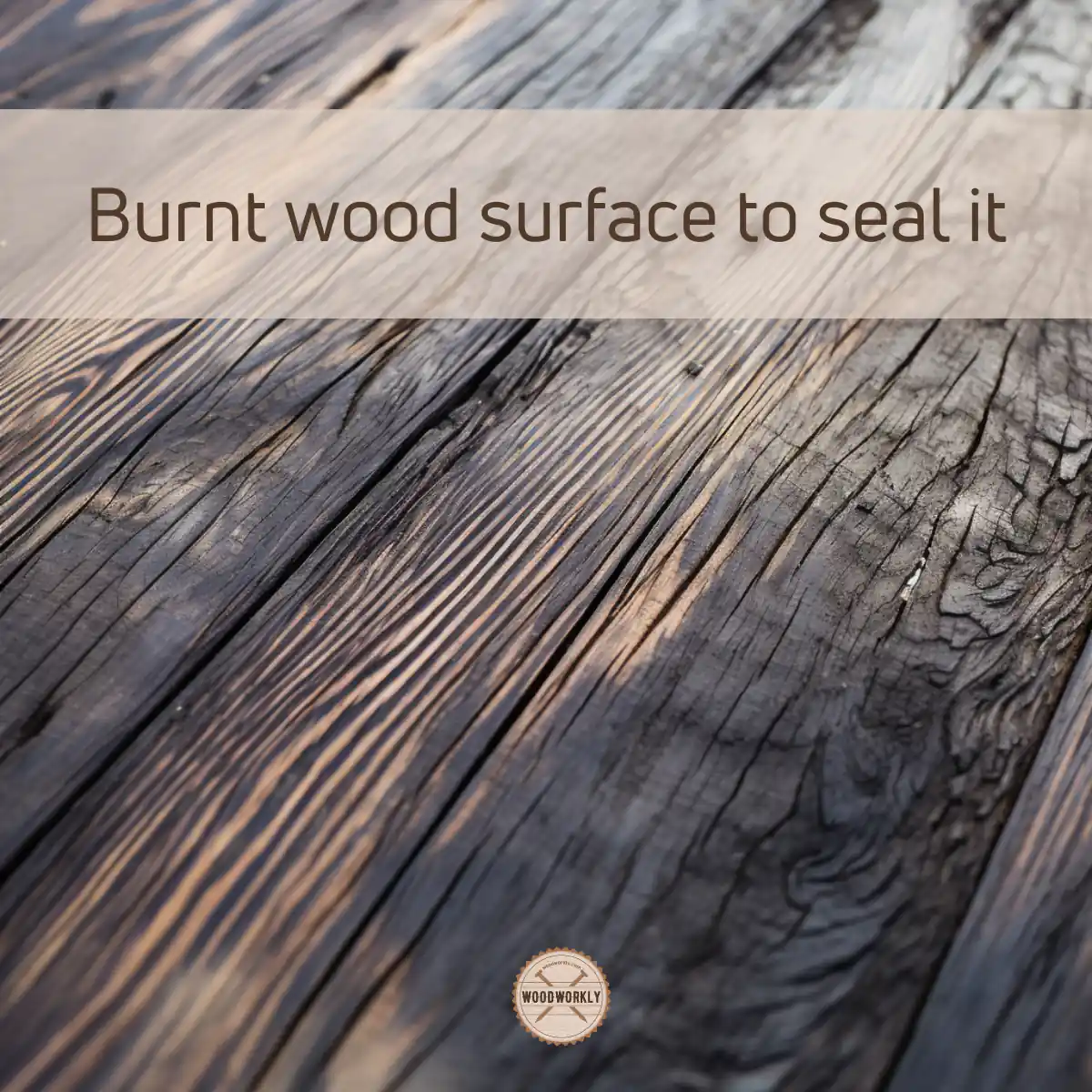
So, let’s have a look at how burning wood helps to repel water.
Does Burning Wood Make It Waterproof?
No, burning wood does not make the wood waterproof. It only protects the wood from entering the wood underneath. It only makes the wood water-resistant.
Burning wood provides water resistance to the wood to keep it protected for so long.
To make wood waterproof you’ll need to apply a waterproofing sealant on the wood.
Here’s a list of waterproofing sealants for any wood,
- SealOnce Marine Premium Wood Sealer
- Thompson’s Water Seal
- Rainguard Premium Wood Sealer
- DEFY Crystal Clear Sealer
- Anchorseal 2
- Ready Seal Stain and Sealer
Wood sealers basically, prevent the wood from soaking up water and prevent the wood from expanding or shrinking due to moisture.

Wood sealers don’t let the wood lose shape due to moisture. But water resistance means just blocking water from going inside and stopping wood from rotting and decaying.
There are some expansions and contractions that can be seen even when the wood has good water resistance due to humidity changes and temperature fluctuations.
Not like waterproof wood with no expansions at all.
Likewise, burning wood only makes the wood water resistant which is really helpful for using burnt wood in moist environments such as outdoors, kitchen furniture, and bathroom furniture.
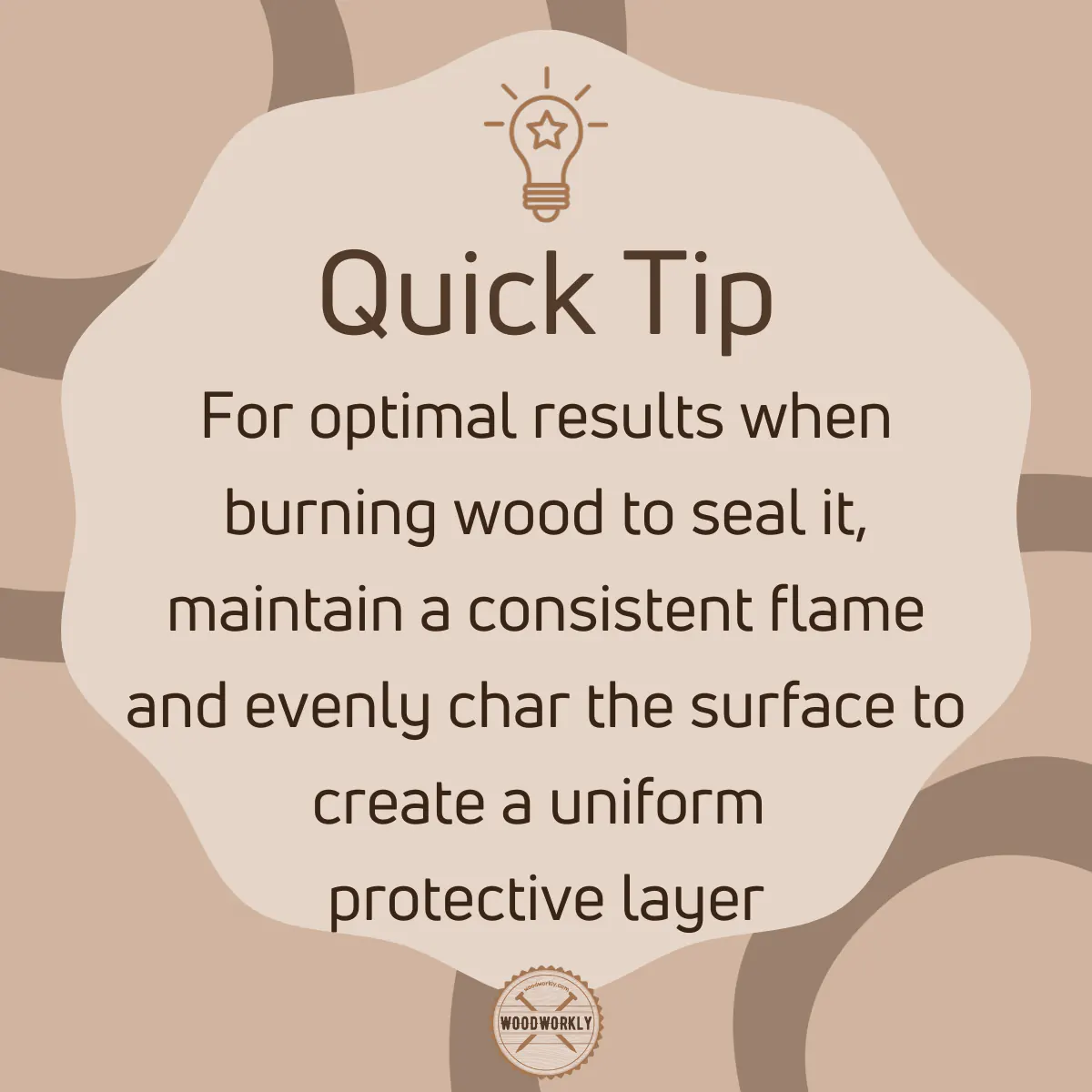
In order to make the burnt wood more waterproof you will need to apply a proper sealant after burning the wood.
How To Waterproof Burnt Wood?
Here are simple steps to make burnt wood waterproof,
- Brush the burnt wood down using a wire brush
- Clean the wood surface
- Apply wood stain to get your preferred color
- Let the stain dry and cure properly
- Apply waterproofing sealant over the surface
- Let the sealant layers dry and cure properly
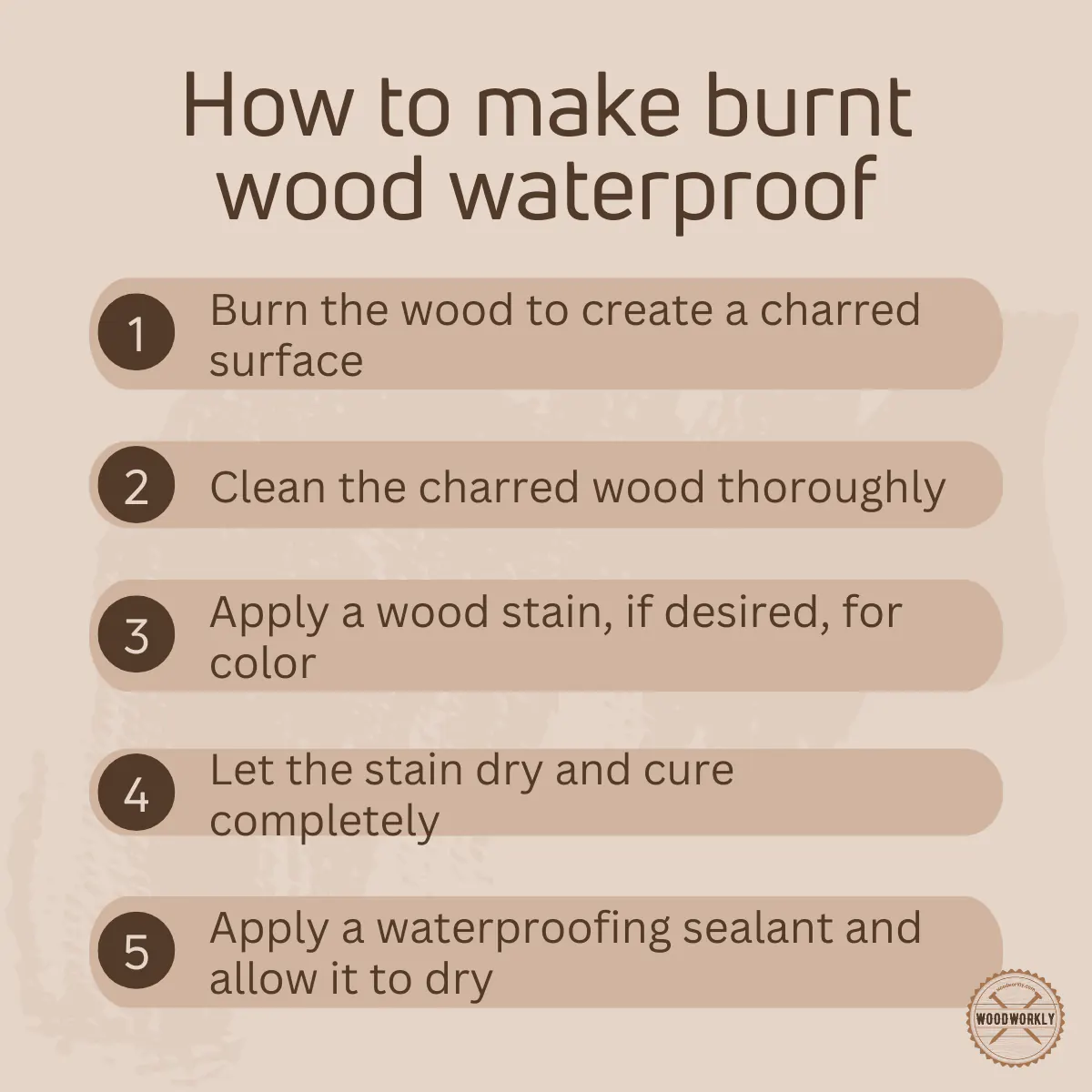
First, you need to test both stain and sealant on a small area of burnt wood to see how they work with it.
Sealing burnt wood is useful for outdoor woodworking projects to get extra protection from weather elements like moisture, water damage, and humidity changes.
So, let’s see how burning wood protects wood from insects.
Do Termites Eat Burnt Wood?
Yes, termites do eat burnt wood. Even though they dislike living in burnt wood, they will feed on it.
Longhorned and metallic woodboring beetles may become bothersome if they appear from your burnt wood art, yet they pose no threat to the wood inside your house.
Female beetles of these species gravitate towards trees that are dying, freshly cut, or recently deceased to deposit their eggs.
Once hatched, the larvae burrow into the tree, where they remain for one to several years, boring tunnels through the wood as they grow.
Therefore, burning wood is not the best option to get protected from termites. Still, they eat burnt wood as fresh untreated wood.
But termites that eat burnt wood are less healthy than the termites that each fresh untreated wood.
This is because termites don’t like to stay on the char layer on burnt wood surfaces. It is harmful to them and doesn’t have any nutrients for the growth of termites.
But still, they eat burnt wood. Maybe there is some other taste that comes from burnt wood that can feel only for termites. We will never know the actual reason.
We only can take action to prevent termites from eating charred wood.
Even after subjecting wood surfaces to open fire, some types of termites still can live inside under moderate intensity of the fire.
Some termites have good tolerance against extreme temperature levels and they do still live under wood with no issues.
They are the ones that keep eating the wood even after burning it.
There’s no clear solution to get protected from termites other than keeping your wood area nice and clean.
Even though brunt wood has little resistance to termites’ attacks over fresh wood, still you need to apply a proper quality sealant to get protected from termites forever.
You can a quality sealant after burning wood to get protection from termites, bugs, and insects.
But there are some other bunt woods left for years with no maintenance that don’t get a single scratch from termites. That may depend on the type of wood underneath.
Plus, there are some termites and insects that love burnt wood because they love to keep their eggs in a warm environment under the wood.
After hatching up those insects tend to eat burnt wood since they already have good resistance to living in that harsh environment with burnt wood inside.
To keep your burnt wood free from termites, clean the woodwork and furniture regularly with a soft cloth and apply a quality sealant all over the wood properly.
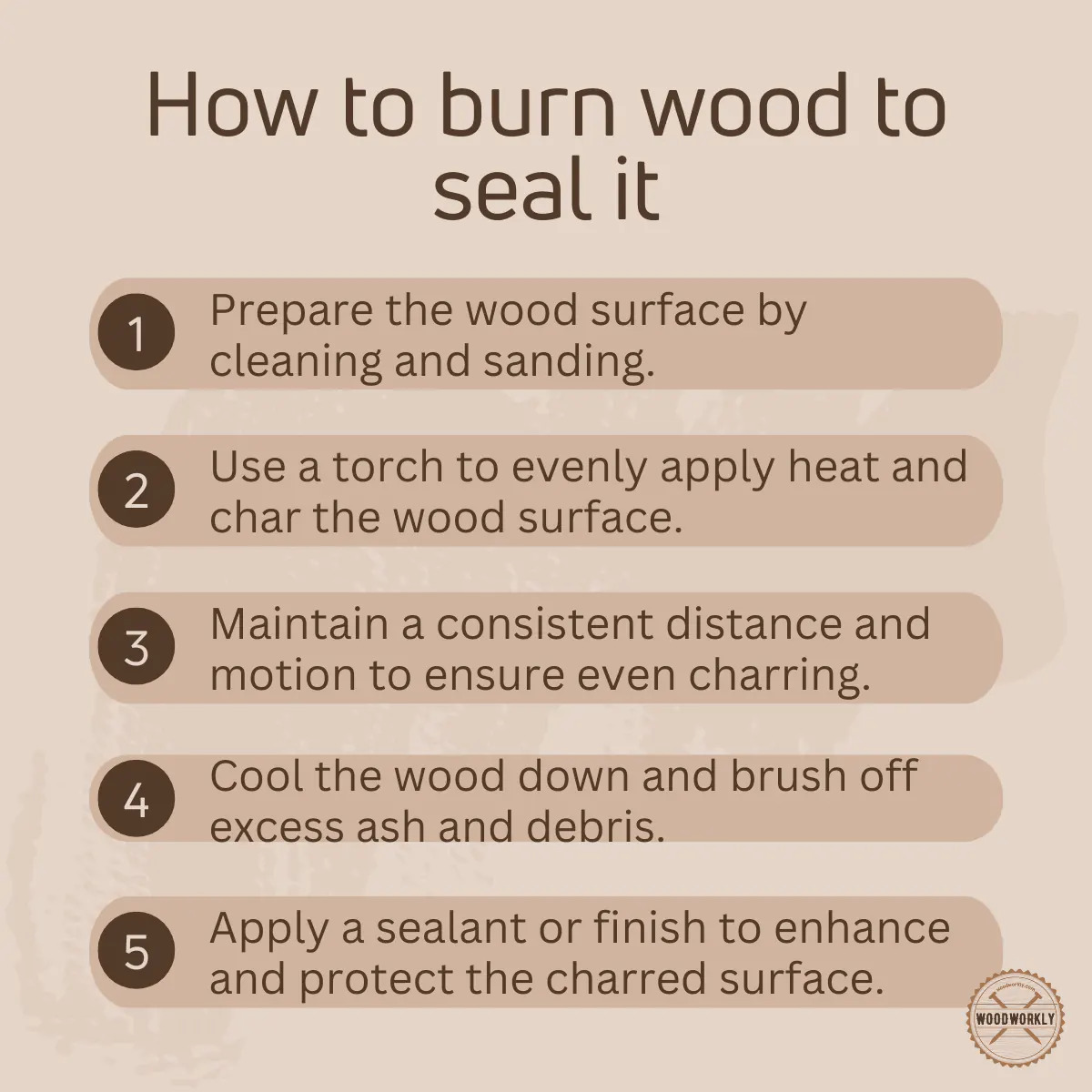
Does Burning Wood Keep It From Rotting?
Yes, burning wood keeps the wood from rotting since moisture won’t go inside of the wood after burning due to the char layer outside.
When the wood is subjected to open fire a carbon layer will build over the wood surface since the cellulose compounds inside will be vaporized and burned off during the burning process.
This coarse carbon layer works as a protective shield against water particles and moisture outside.
Under regular conditions, moisture won’t go inside the wood due to this carbon-coated layer and minimize wood expansions and contractions due to humidity changes.
Because of not having a significant amount of moisture inside, wood will keep from rotting. This is how the burning process helps the wood to prevent rotting and decaying.
But when you keep burnt wood outside under harsh weather conditions and rainy days, moisture and water particles will find a way somehow to get inside the wood through the spaces between the char layers.
When those water particles and moisture hits the wood underneath and stay there for so long, the wood may start to rot from the inside.
You won’t notice until the rotting comes to display the outside layer of the wood.
As soon as you notice the rot of burnt wood, restore wood by applying a quality product like FlexSeal.
FlexsSeal helps to stop wood from rotting further and provides a waterproofing layer to prevent moisture from penetrating inside the wood in the future.
Therefore, better to seal your wood after burning before keeping it in extreme weather conditions to prevent wood from rotting for so long.
That’s it, folks! Hope you have gained good knowledge about, does burning wood seals it properly or not.
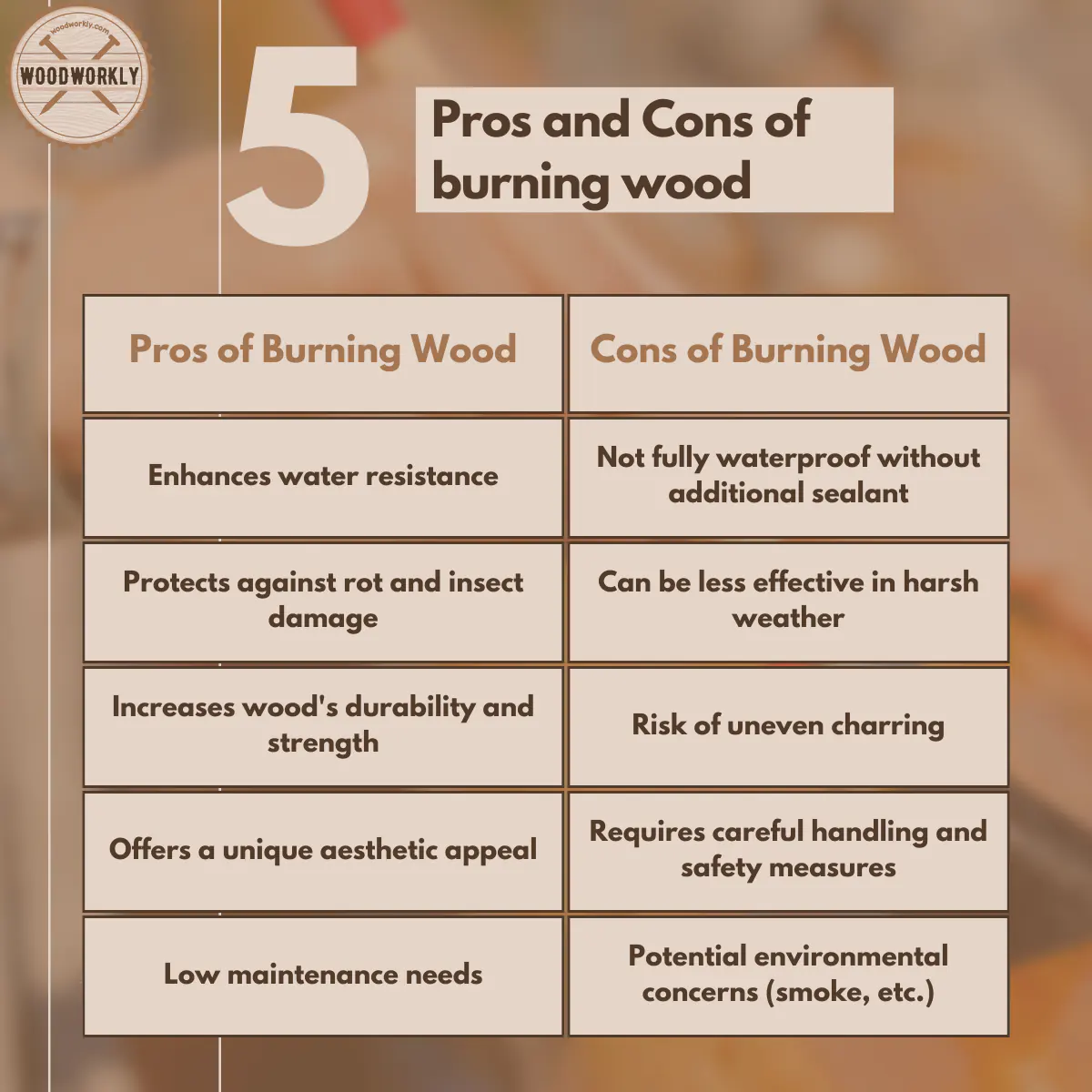
Does Burning Wood Make It Stronger?
Yes, burning wood makes the wood stronger and more durable because when the wood is subjected to open fire, the wood grains of the timber are fused to bond tighter together.
When the grains are tight together, the dimensional stability of the wood will increase, and the strength of the wood will also increase accordingly.
Therefore, you can make the wood stronger while enhancing protection from weather elements by burning the wood.
Both compressive strength and flexural strength will increase the wood burning.
Strong burnt woods stay longer than untreated woods since they are able to carry heavy loads without losing their stability.
Plus, burning wood helps to wood get protected from scratches, cracks, and peels.
Does Wood Harden When Burn?
No, wood doesn’t harden when burned, it anneals. When the wood is subjected to open fire it may get a bit brittle and weak.
You can make the wood harden by fire hardening the wood.
In fire hardening, the moisture will remove completely from the wood by evaporation.
This is done by charring the wood directly in a fire or coal bed.
When moisture gets removed from the wood, the wood fibers will get hard, and ultimately whole wooden surface gets hardened.
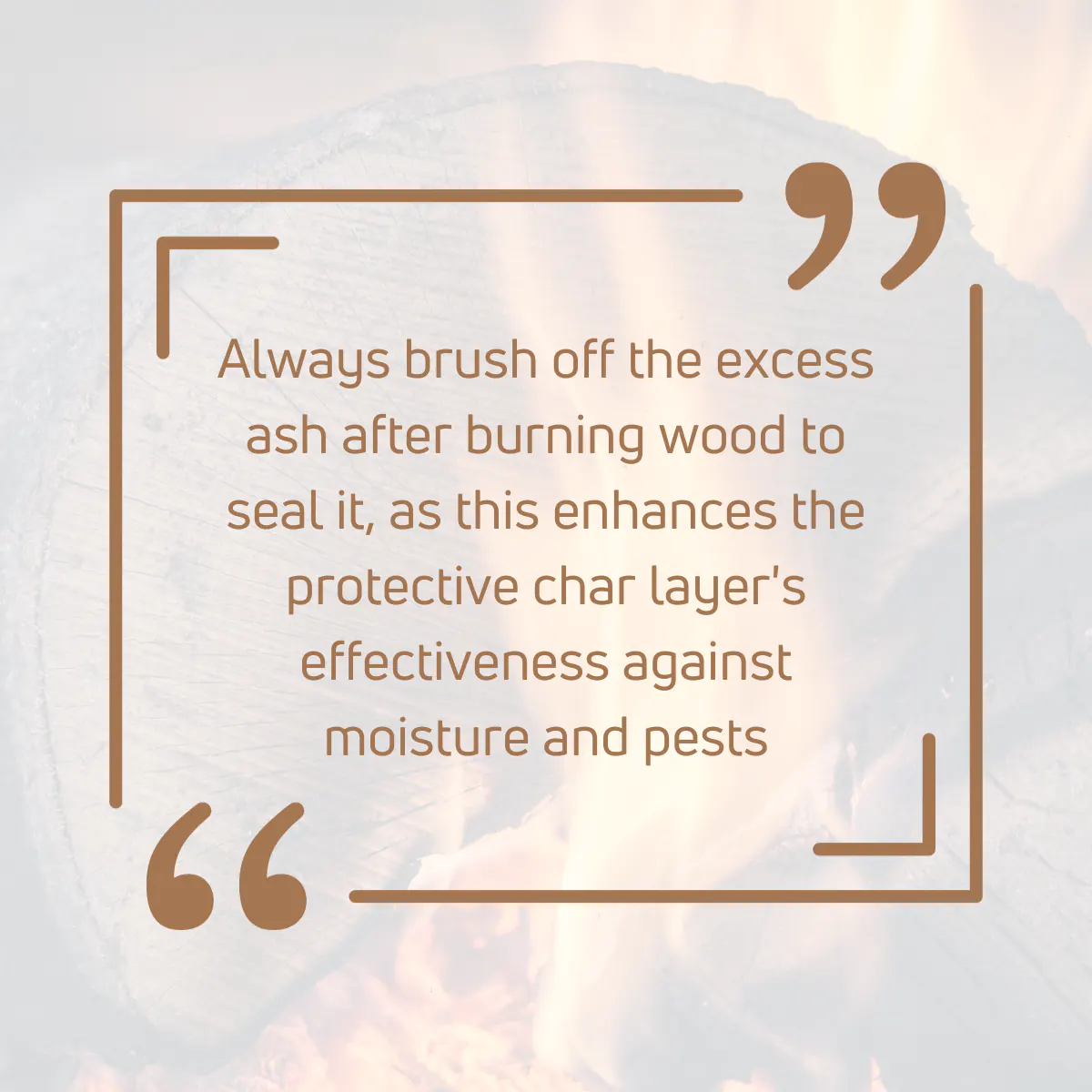
What Are The Advantages Of Charring Wood?
There’re lots of advantages you will gain by burning wood for both interior and exterior woodwork and furniture.
Here’s a list of benefits of charring wood,
- Burning protects wood from weather elements
- Make the wood more water-resistant
- Prevent wood from rotting and decaying
- Prevent wood from termites and insect attacks
- Increase the wood durability
- Improve the wood strength
- Able to use wood for so long with less maintenance
- Able to use for firewood
- Able to use for construction projects
- Give an attractive appearance to the wood
Let’s answer some frequently asked questions as well.
FAQs
Is burnt wood more durable than unburnt wood?
Yes, burning wood increases its durability and strength, as the process fuses wood grains tighter together, enhancing its structural stability.
How long does burnt wood last without maintenance?
Typically, burnt wood can last 12 to 15 years without maintenance, but its longevity can be affected by environmental factors.
Do I need to apply a sealant to burnt wood for outdoor use?
Yes, it’s advisable to apply a quality sealant to burnt wood for outdoor use to protect it from harsh weather conditions and enhance its durability.
Does burning wood change its appearance?
Yes, burning wood gives it a unique black or reddish-brown appearance, adding an aesthetic appeal along with protective qualities.
Did I cover all you wanted to know about: Does Burning Wood Seal It?
In this article, I have deeply discussed, does burning wood seal it, does burning makes the wood waterproof, how burning wood helps the wood avoid rot and decay, and much more.
Burning wood creates a carbonized surface layer, effectively sealing it by enhancing water resistance and protecting against rot, insects, and UV damage. This process, known as charring or Yakisugi, doesn’t make wood waterproof but significantly improves its durability and stability against environmental elements.
Furthermore, I’ve answered some frequently asked questions as well.
Hope you have gained a good understanding about, does burning wood seal it and how burning helps the wood to get protected.
Try to burn wood and make beautiful furniture with it to see its strength and high durability to live so long even with less maintenance.